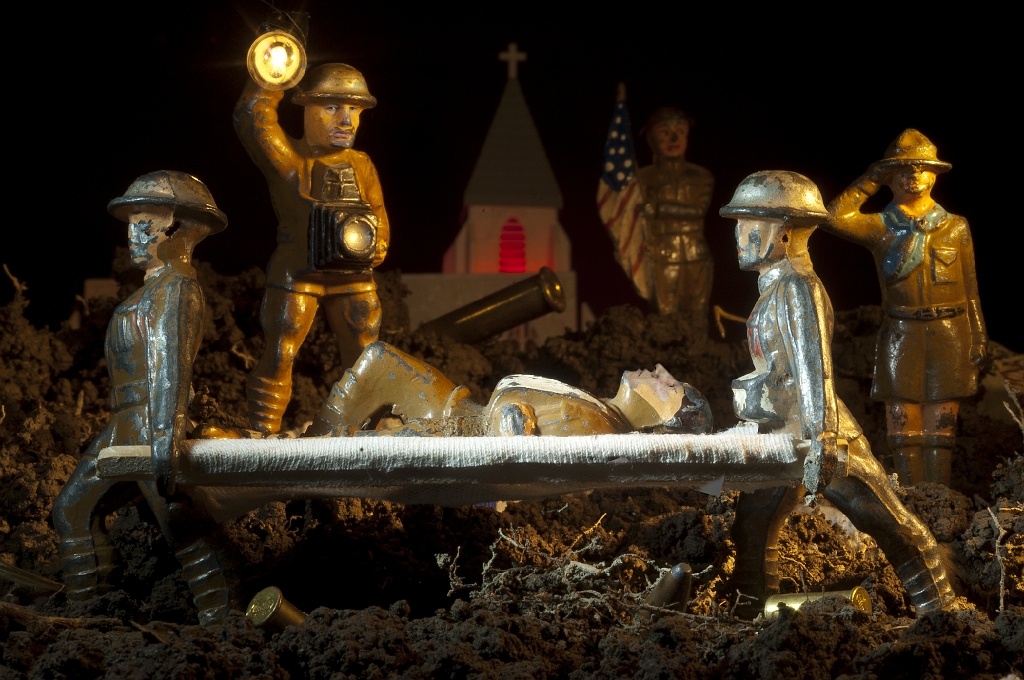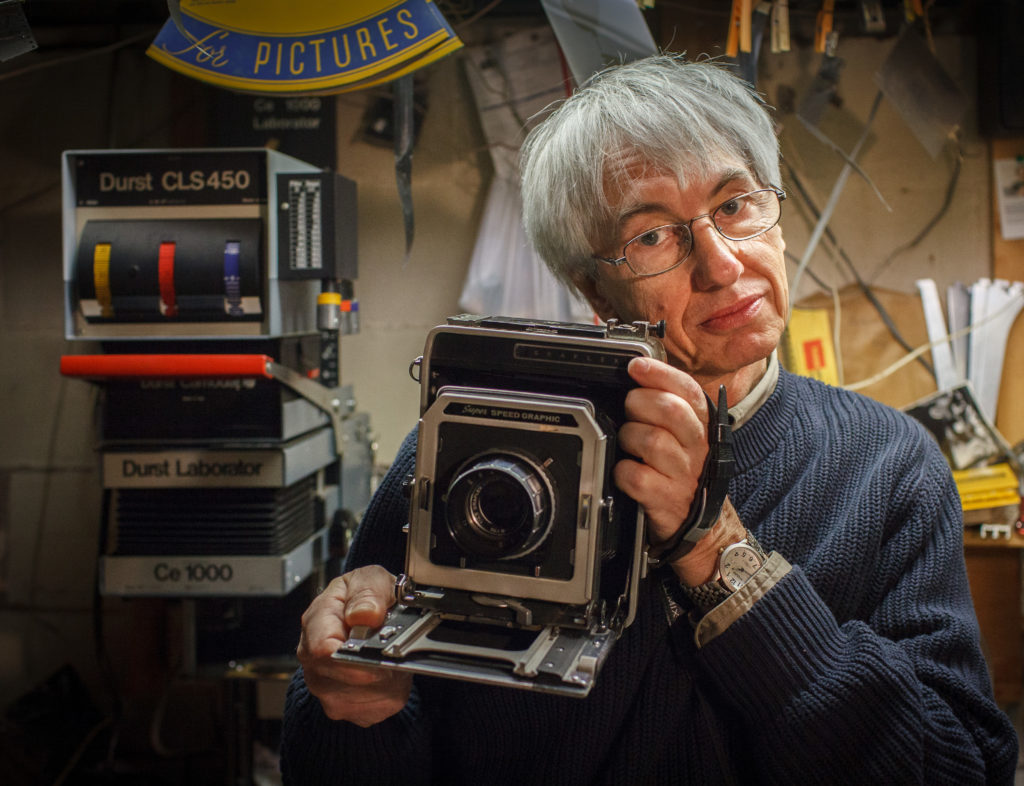i solemnly swear by Paul Pearce
August 30 to October 11, 2025

About the exhibit
“i solemnly swear” is an exhibition about the consequences of conscription and deployment into combat. I was drafted into the US Army in 1967 and deployed to Vietnam in 1968. At Fort Dix I was trained to be the “Ultimate Weapon,” an infantry soldier with a rifle and bayonet.
I should never have been a soldier, and yet, I was a good soldier. For this reason, I am haunted by what I did and what I witnessed. When people say, “Thank you for your service,” my reply is, “Don’t thank me for my service, you don’t know what I did, my country made me do it and I was just a kid.”
Before being drafted, I was a naive, ordinary, middle class nerd who loved to dance. After combat as an artillery forward observer in the highlands of Vietnam, I returned to my country with a jaundiced eye. The world was dark and I felt like an alien in my own country. Realizing that our government, our country, was willing to sacrifice us soldiers as a matter of foreign policy and economics brought into question all the tenets of my upbringing. Invading another country under false premises has instilled distrust and cynicism of our country and society. I looked at the world around me and wondered—I still wonder—who these people are that would be complicit or look the other way. Before conscription, I thought I was living in an era of American exceptionalism where people were friendly and the government was good because it was founded on noble principles and guided by a solid constitution and rules of law. After being discharged, I realized it was actually American deceptionalism. At its core, American deceptionalism is nationalism disguised as patriotism. I see patriotism as a political vehicle for power and wealth-building. Patriotism is used to sell mattresses and red, white, and blue beer. This collection of work reflects my inability to escape the trauma of my experience.
From a very early age, our culture exposes children to the made-up version of war. Boys especially play war with physical “weapons” or violent computer games. They make no connection to the actual damage and pain of real war. That was my life: we were indoctrinated. It was normal to let children role-play at killing each other. I played war and even made lead soldiers. My parents supplied the uniforms and weapons. I never made the connection to real war. I discovered that during WWI children played with lead soldiers similar to mine. The difference was that their soldiers included the wounded. There were bandaged soldiers, stretcher bearers, and nurses. I wonder how the children playing with these wounded toy soldiers saw the world and thought about the war they represent. I have created photographs using these “toys” to imagine what could have been going through these young minds. I have embedded my face, both current and as a child, in some of my toy soldiers to illustrate the connection between play and reality.
As the war in Ukraine grinds on, I can’t escape the helpless feeling I get realizing we have not learned this lesson. The world is at war, and preparing for future wars. Governments divert resources from humanitarian causes to weapons and ammunition. Over the last three years more than a million people have died and the only solution appears to be adding more armaments and ammunition. Unfortunately, this is only one of the world’s current wars.
My work is an expression of grief. My work is my therapy. My work is a silent cry for peace of mind and peace in the world.
Take a virtual tour of the exhibition
About the artist Paul W. Pearce

I grew up in suburban, middle-class America where my parents, my school, and my church taught me up to respect authority, be good, and also do good. As a church-attending Eagle Boy Scout I was on a path to become a leader.
My first attempt at college ended on a bad note—I was more interested in dancing than my major, Zoology, and a consequence was being drafted into the Army. I scored high enough at the screening tests to be offered a placement in Officer Candidate School. I was commissioned as a lieutenant in the Artillery, which made me a leader by law, and guaranteed a deployment to Vietnam as a forward observer.
Combat in Vietnam has had a lifetime effect on my worldview. I knew what I did was wrong, I wanted everyone else to know what we were doing to Vietnam and our country was wrong. Returning home with a camera and a challenge to speak out about the evils of war, I taught myself photography and started photographing the anti-war protests in Syracuse. I photographed the Kent State protest that closed down Salina Street in downtown Syracuse and gave the Syracuse Peace Council my photographs for publication in their newsletter.
I returned to college at SUNY Oswego majoring in art, concentrating in photography and printmaking. I graduated with a Bachelor of Arts and continued in their Master of Art program.
After receiving a NYSCA grant, I drove to Florida in a mail truck I converted to a mobile living space and darkroom. I made hand-colored “tacky Florida postcards” and connected with a writer covering two death row inmates. I accompanied him to Florida State Prison to photograph the prisoners and the death chamber. I returned to Central New York and had a show displaying these death row photographs.
Taking a position with the Peace Council, I spent more than two decades managing their printshop, SPC press, producing cable content for SPC-TV, and contributing to their newsletter and community organizing.
Teaching photography gave me an opportunity to connect to the spirit of young people with promising futures. It was important that my students learned to use their art as a means of self-expression. My twenty year teaching experience included working at SUNY Oswego and Cazenovia College.
I use my cameras to set me apart, removed from the world, to serve as windows into the madness I perceive. My photographs are a silent plea for help. I put my guns away—my camera is my weapon. My images are two-dimensional cries for reflection, attention, and action.
My history of image making
My father wanted to do photography so he gave me a film developing kit and we both processed film in the basement. This was my introduction to photography. In Vietnam, a Kodak Instamatic Camera was my way to document my experience, photographing my buddies, burning villages, and carrying bodies out of the jungle.
Returning home with two 35mm cameras (bought at the px) I shot photos to document the world around me including anti-war protests. Being self-taught and setting up a darkroom required extensive studying. Photo books and magazines were my instructors. In addition to the technical information, famous photographers became an influence. Robert Frank, W. Eugene Smith and Henri Cartier Bresson inspired me to do “street photography,” Duane Michals showed me that you can create an alternative reality.
Ansel Adams and Edward Weston enticed me to shoot 4×5 large format film. By the time I became an art student, I already had my own large format color darkroom. For many decades I never left the house without a camera over my shoulder—from a Leica M4 with a 35mm lens to a compact digital camera. I used these cameras the way everyone uses their phone cameras today.
Image making is exciting. Creating an image that is visually strong and expresses my message makes me happy and proud. My recent work brings me to the studio to express my frustration with the world and share it with you.
Photographs have contributed to ending wars, ending oppression, and inspiring acts of compassion. The power of the image to effect change, enlighten, or inspire, keeps me creating. This is my passion, this is me.
